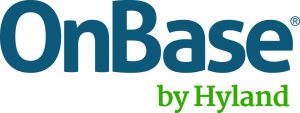State and local governments have long dealt with staff reductions and shrinking budgets. These challenges have forced organizations to reimagine the way they combine technology and personnel to build the most efficient processes that also meet constituent needs.
An April memo issued by the Office of Management and Budget requires the federal government to do the same. The memo calls on agencies to “create a lean, accountable, more efficient government” by examining processes, eliminating redundant programs and reducing the size and cost of the federal workforce.
By June 30, agencies must submit a high-level draft of their reform plan to OMB. The plan should include progress on near-term workforce reduction actions, a plan to maximize employee performance, and an analytical framework that considers how agencies’ activities align with their mission.
With this tight timeframe, many agency leaders are wondering how they’re going to achieve this goal with diminished assets.
During a recent online training, GovLoop sat down with Hyland’s Industry Marketing Manager, Terri Jones to learn how feds can meet this directive and deliver on their missions. When examining state and local governments, Jones explained how Enterprise Content Management (ECM) has been an important piece in their survival strategy. ECM is the technology used to handle content in organizational processes.
Jones highlighted the benefits of applying ECM to your agency reform plan, where it provides the following options:
- Capture. One of the first questions to ask yourself is if you are capturing all documents and information as efficiently and as easily as possible. If the answer is no, you may want to consider the value and efficiency of starting your streamlining process in a paperless way. “You are eliminating the black hole of a form getting submitted to government and getting lost,” Jones said. By avoiding paper forms, you can minimize data entry. For citizens, this allows easier access, including the ability to apply online through self-service platforms.
- Manage and immediately route to staff. Consider how you are handling intake — from document routing to signatures and notifications. This part of the process causes the most delay. Paper impairs visibility and does not adapt to new rules either. Through ECM, you can monitor processes and notify staff members. ECM can also automate tasks and case management solutions. This allows customers to receive receipts of their submissions and other status updates.
- Access. How are you providing appropriate access to everyone who needs it? Is it efficient? It is important to consider how you can make accessing content from anywhere much easier. ECM provides increased access and makes fieldwork possible. Whether you are offline or mobile, it no longer matters where you are as long as you have internet access. “This changes the game of what you have to carry with you when you are out doing fieldwork,” Jones said.
- Integrate. “This is the moment that makes the IT world happy or sad,” Jones said. When it comes to integrating, consider the content that needs to be connected to the solutions that contain the related information. This step can be complicated, but it has potential to transform efficiency and integrate content seamlessly. This allows you to access content directly from other applications and synchronize data in real time, as long as you have internet. You can avoid spending time searching for the right file, which wastes time and workforce efficiency.
- Measure. ECM allows you to measure the information and activities within your on-base system. But you should take into account how you currently measure process efficiency. Do you have a real-time view of processes? Can you assess compliance? With ECM, you can monitor and report on automated processes, identify and eliminate bottlenecks and map various projects. You will actually be able to see the process and deliver its view in a way that is meaningful to managers and executives who are trying to understand how it is working. Also, this allows you to anticipate what-if situations, where you can analyze the baseline measures of data you already have.
- Store and protect content. It is important to ask yourself if you are meeting the compliance and records requirement for your agency. Is information encrypted? You want to be able to store and protect content from disaster throughout its lifecycle, encrypt information, and destroy content in accordance with legal retention requirements. With ECM, you have the ability to enforce and protect your content. This means less work to churn files at the end of fiscal years, as well as reduced cost from outsourcing.
From better customer service to driving internal efficiency, using ECM can help streamline your government agency. “OMB 17-22 is a challenge, yet an opportunity for us to demand the technology that we deserve,” Jones said. With ECM, government organizations have managed to reduce costs, simplify their IT platforms and handle more work with less staff. This is a lesson you can now apply with the OMB memo.
For more information check out, 6 Capabilities Your Agency Needs In Tech, Using Content Management to Meet Federal Reforms, and The Opportunity of Technology Under New Federal Reforms






Leave a Reply
You must be logged in to post a comment.